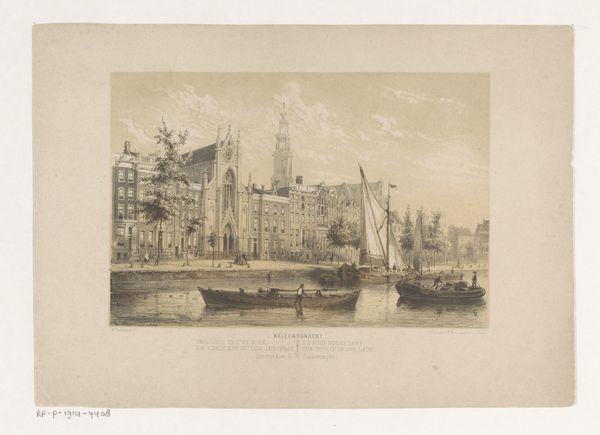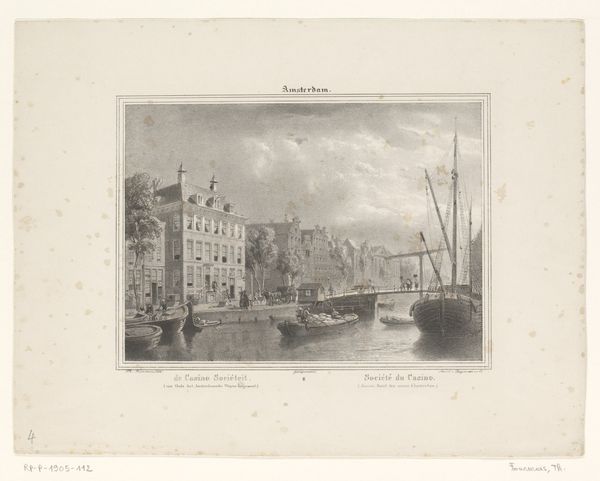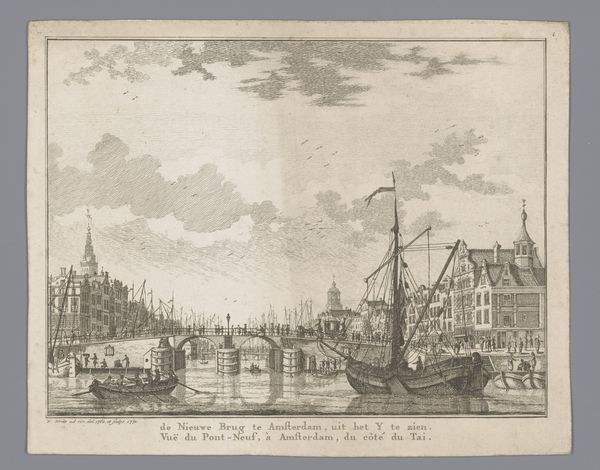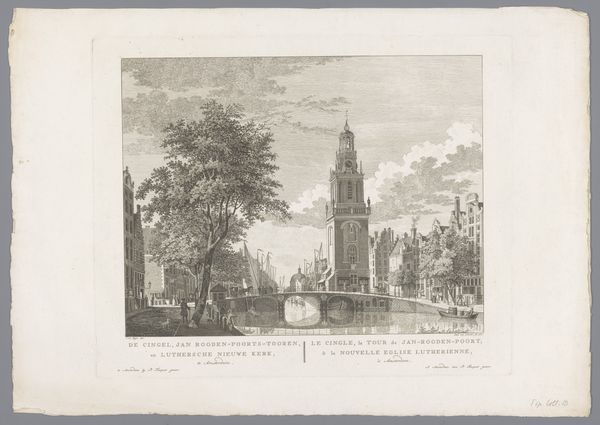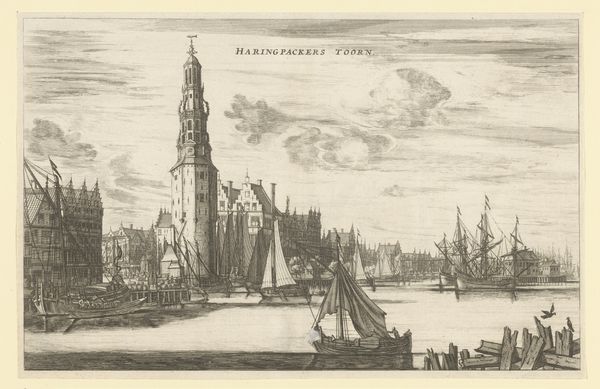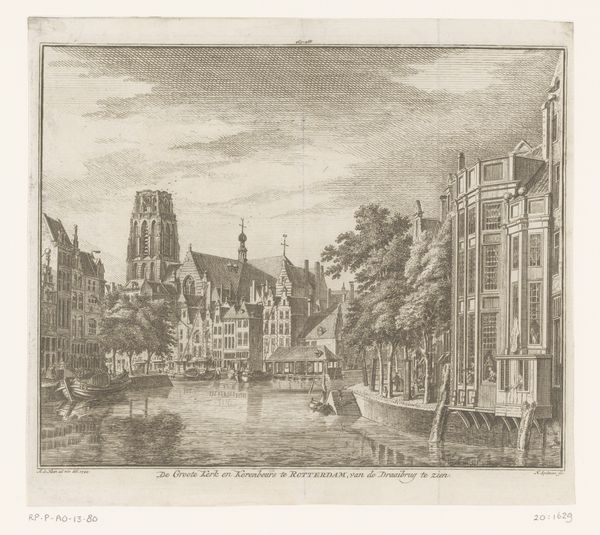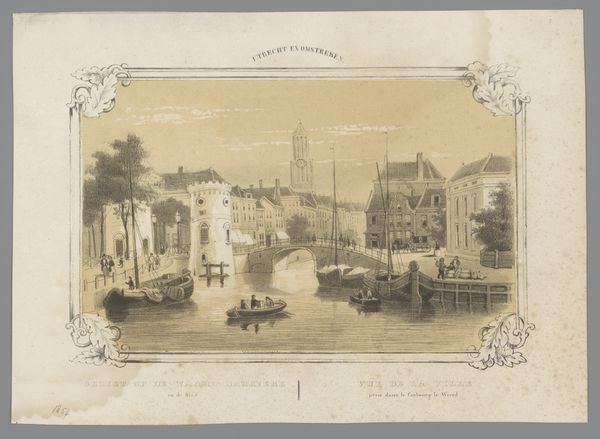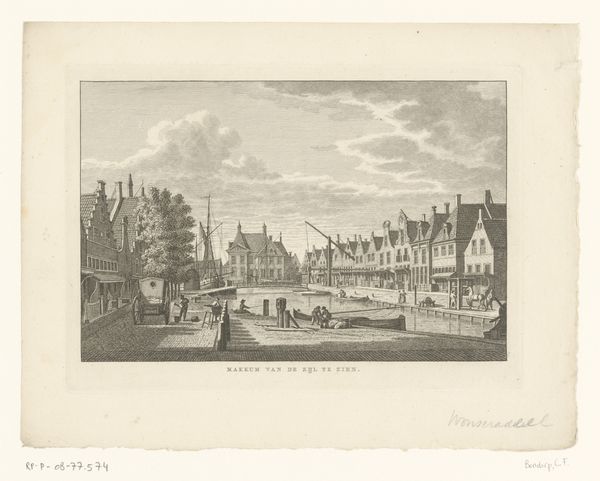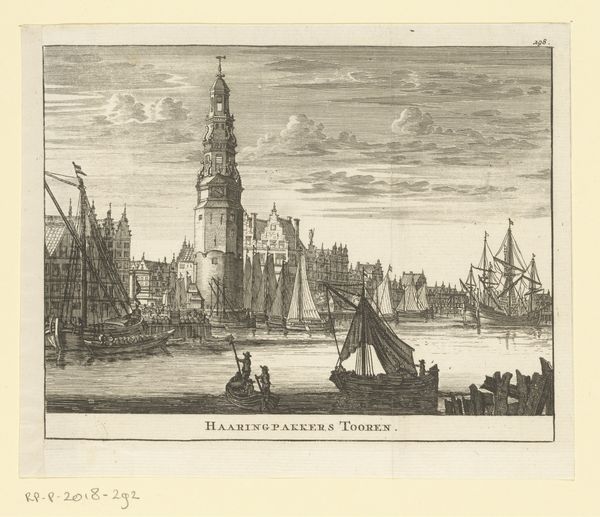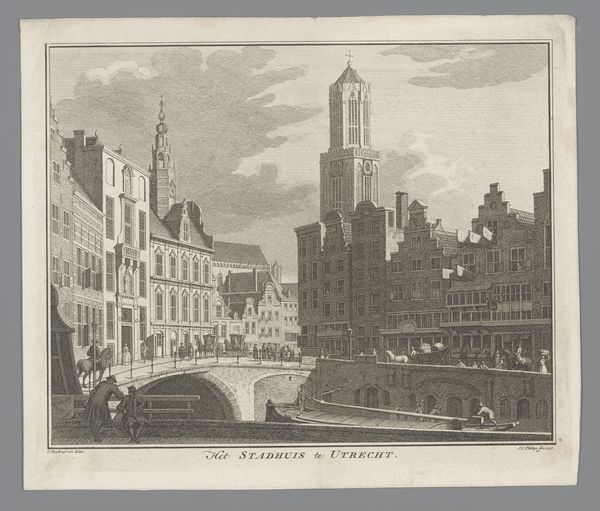
Dimensions: height 168 mm, width 254 mm
Copyright: Rijks Museum: Open Domain
Editor: Here we have Jobst Riegel’s "View of Rotterdam from the Draaisteeg," an engraving from 1863. I’m immediately drawn to the detailed textures and the light playing on the water. How do you approach a work like this? Curator: From a materialist perspective, I see this print as a product of its time, embedded in the industrial and social transformations of 19th-century Rotterdam. Engravings allowed for mass production and distribution of images, catering to a growing middle class interested in representations of their urban environment. Consider the labor involved in its creation - the engraver's skill, the printer's process, and even the trade networks that circulated these images. What impact might those aspects have had? Editor: That's fascinating. So, it’s not just about the image itself, but about how that image came to be and who consumed it? I hadn't considered the labor behind something that feels so delicate. Curator: Precisely. Think about the materials as well. The quality of the paper, the type of ink used, all contribute to the final product and speak to the economic realities of the time. How does the relatively inexpensive nature of prints like this affect the art world at large? Editor: It democratizes it, perhaps? More people could own art, not just the wealthy. So, instead of seeing this as a romantic cityscape, we can see it as evidence of a shift in artistic production and consumption? Curator: Exactly! The romantic aesthetic served a social purpose. By documenting a romantic, Dutch Golden Age vision of Rotterdam, we see how 19th century consumption served ideas about history and national identity. The engraving is as much a record of Rotterdam as it is about those ideologies. What are your thoughts? Editor: I guess I had only been looking at the "what" – the subject of the print. You've shown me how to consider the "how" and the "why" behind its creation, who could access the final material, and the broader economic and cultural context that helped produce it. Curator: Precisely. Material analysis lets us dig deeper, questioning not only what is represented but the conditions of representation itself.
Comments
No comments
Be the first to comment and join the conversation on the ultimate creative platform.
